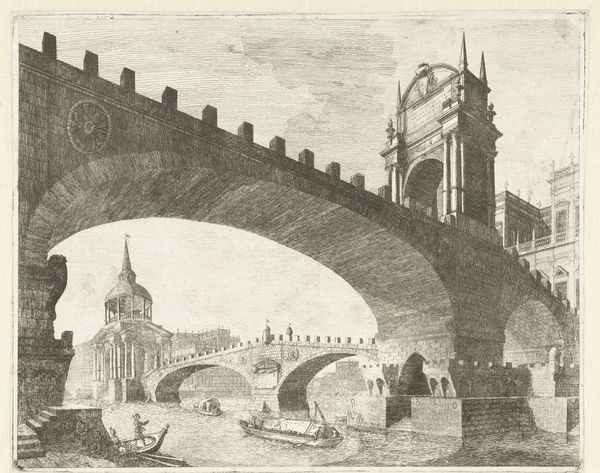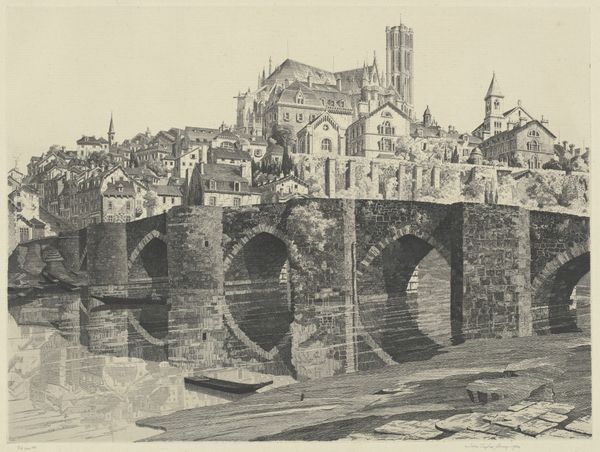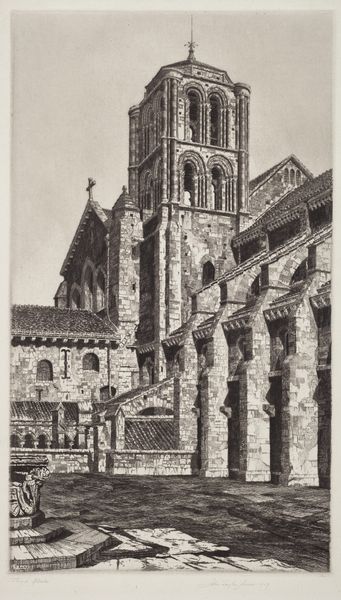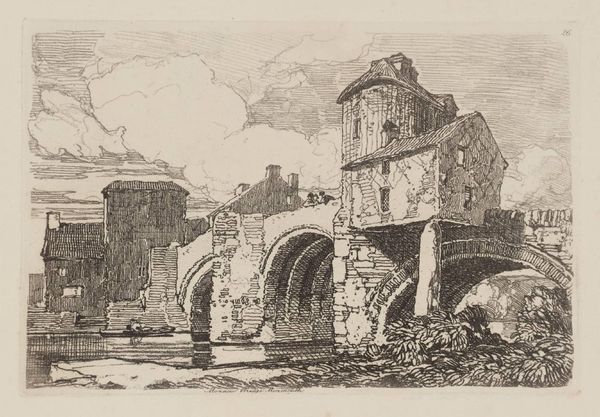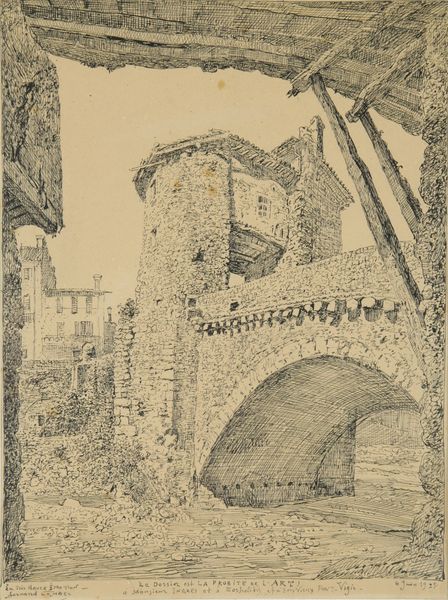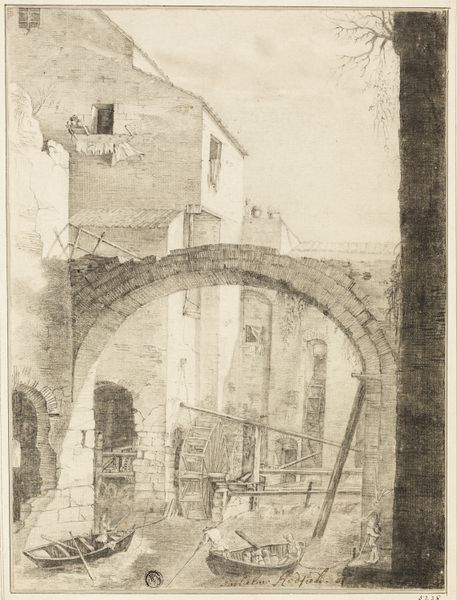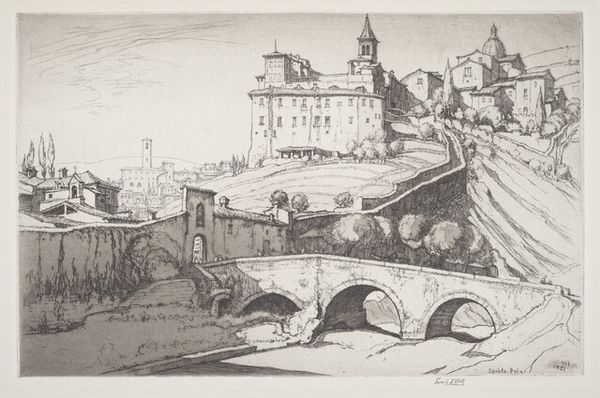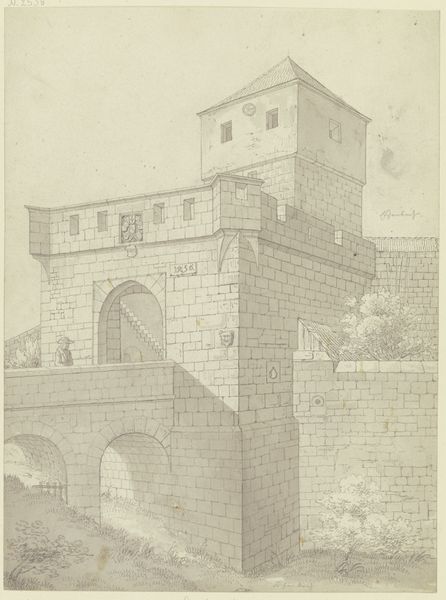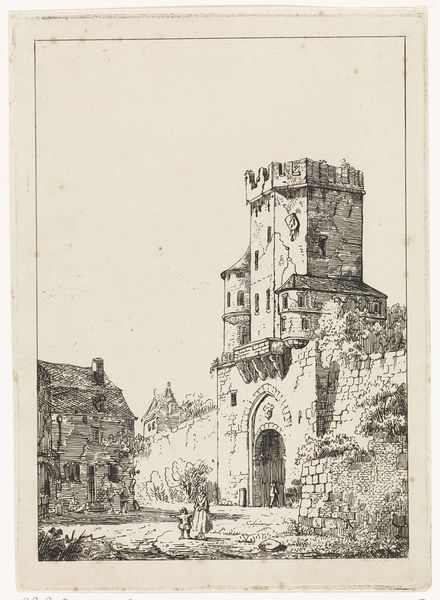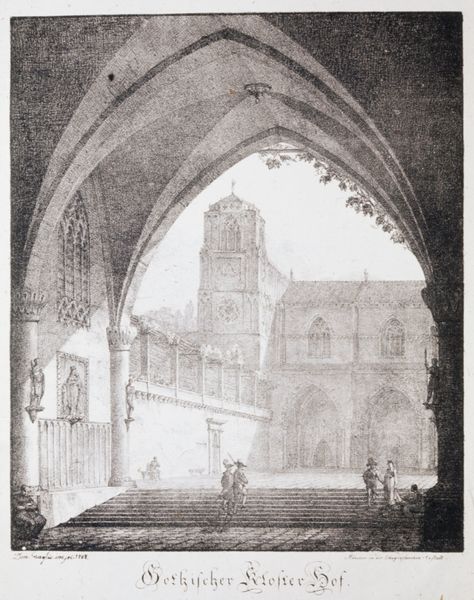
print, etching, architecture
# print
#
etching
#
old engraving style
#
landscape
#
cityscape
#
architecture
#
realism
Dimensions: plate: 22.8 x 17.7 cm (9 x 6 15/16 in.)
Copyright: National Gallery of Art: CC0 1.0
Curator: This etching, "Ponte Fabricio, Rome," was created by Louis Conrad Rosenberg in 1927. The focus, as you can see, is on the Ponte Fabricio, a historic Roman bridge. What are your first thoughts? Editor: There’s a solemnity to it. It looks weighty, permanent. All that stone rendered with such meticulous detail… I find myself thinking about time and the human effort required to erect structures like these. Curator: Right. The aquatint medium and the old engraving style do impart a sense of the historical weightiness you're describing. You have to consider the socio-economic dynamics behind building bridges like this one. Labor and resource extraction were fundamental to these large projects, which connect us to the modes of production in this image. Editor: Absolutely, and that prompts consideration of whose stories are included. This bridge facilitated movement and connection across the Tiber River; yet who benefitted from that connectivity? Did its construction displace local populations? Are their perspectives accounted for within the frame, or are we left to ponder this through contemporary theories of space and power? Curator: It’s a fascinating question. One wonders about the social context of the artist as well. What did Rome signify for Rosenberg in 1927, amidst the rise of fascism? We have the finished print here, but what was the means of acquiring and utilizing these resources at this time? These processes matter. Editor: It adds layers to the observation. Viewing the labor embodied by the structure makes one aware of absent narratives and whose version of Rome gets visually represented and, subsequently, consumed as a picturesque, depoliticized scene. Curator: Precisely. By considering those missing layers, we push against this idea of passive consumption to view this work as more than just a tranquil Roman vista. The artist has skillfully crafted an object from very concrete tools, processes, and resources, to produce an image with undeniable emotive depth, and the very fact it represents ancient architecture tells us something of the permanence and monumentality that societies past have worked towards, perhaps we are more transient in our modern builds. Editor: The power and complexity of these considerations regarding access, perspective, production, and longevity truly underscore the importance of continued conversations surrounding representations of public space.
Comments
No comments
Be the first to comment and join the conversation on the ultimate creative platform.
